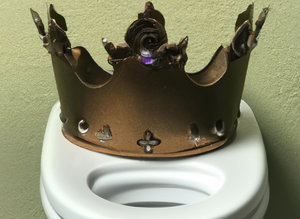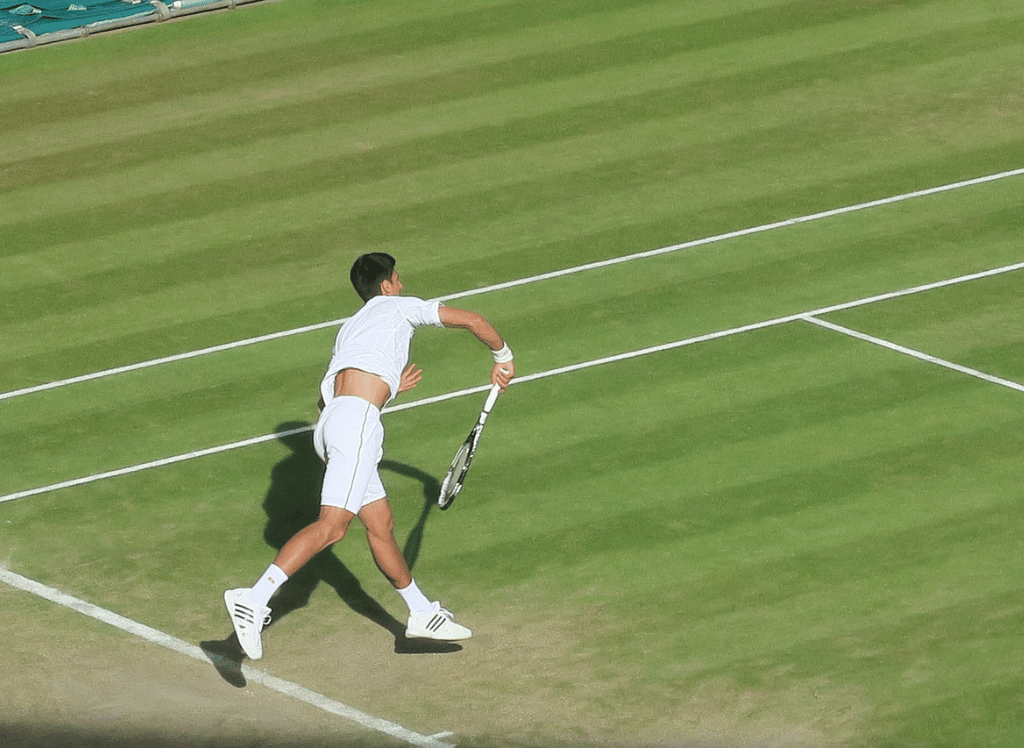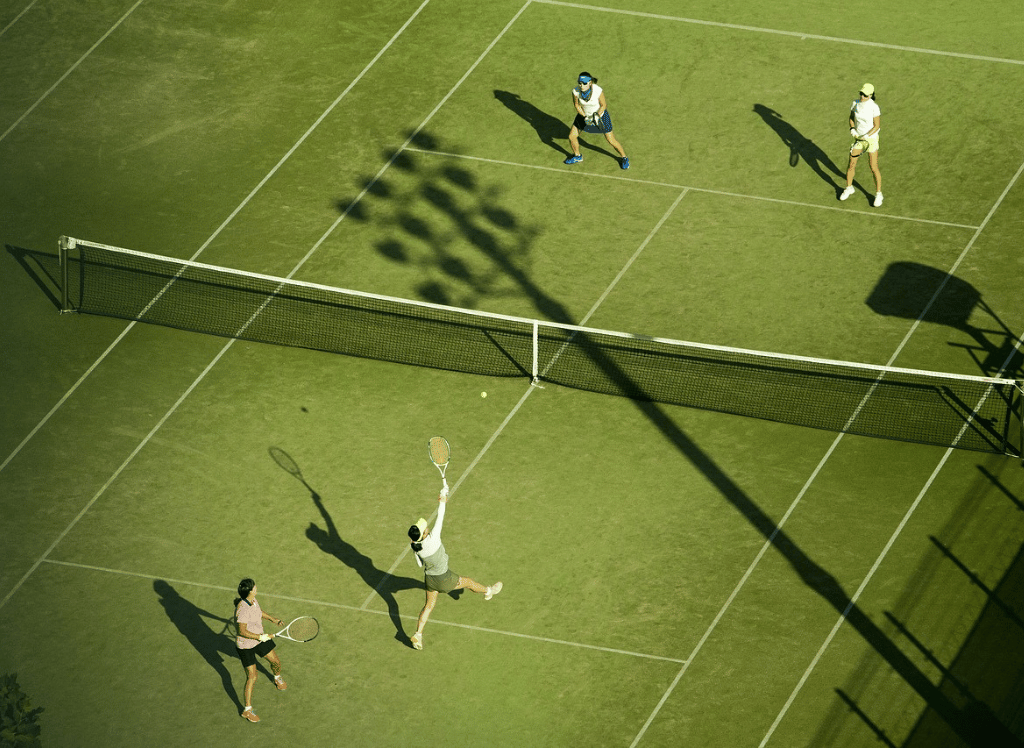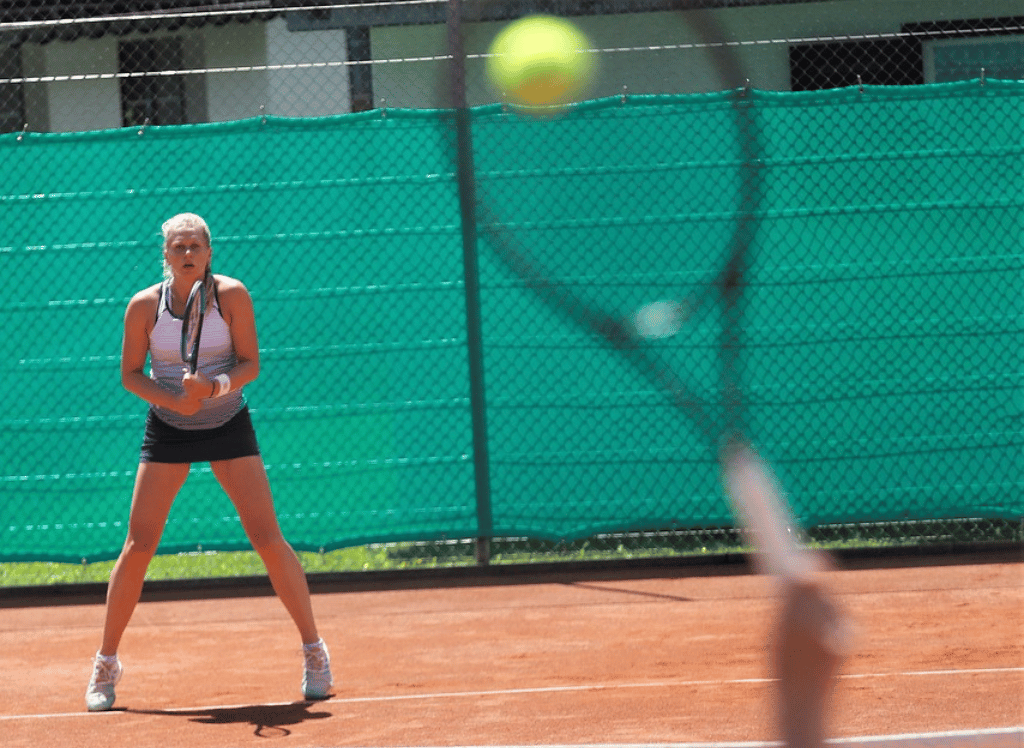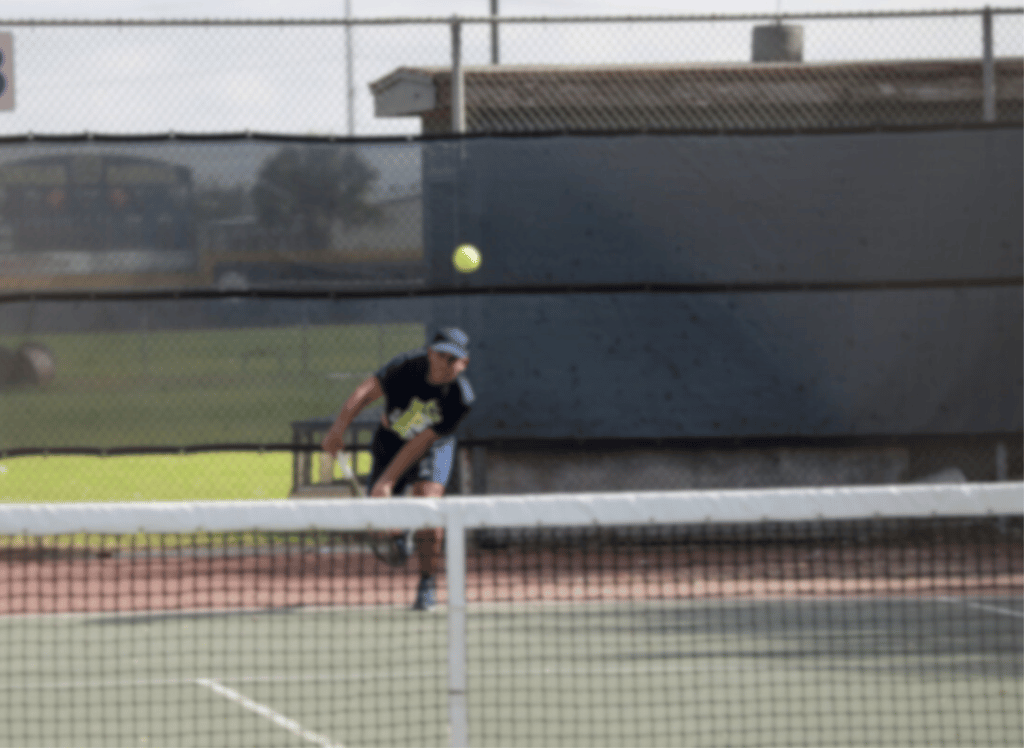The unpredictability of how long is a tennis match adds an extra layer of excitement to the sport. Unlike many other sports with fixed durations, tennis matches can vary significantly in length, often leaving spectators on the edge of their seats. In this post, we’ll delve into the factors that influence the duration of tennis matches, compare how long is a tennis match to other sports, and discuss how players can prepare for and cope with long matches. Get ready for a thrilling exploration of the world of tennis!
Short Summary
- Best-of-three set matches typically last about 1.5 hours, while best-of-five set matches can reach ~2.5 hours.
- Variables such as player skill level, court surface and weather conditions affect the duration of a tennis match.
- High school and college tennis matches tend to be shorter than professional ones due to differences in skill levels and format used.
Average Duration of Tennis Matches
Generally, tennis matches are divided into two categories: best-of-three sets and best-of-five sets. A typical tennis game in best-of-three set matches usually lasts around 90 minutes, while those in best-of-five set matches take approximately 2 hours and 30 minutes.
However, these averages, including the average length, can fluctuate depending on various factors, which we’ll discuss in detail below.
Best-of-Three Sets
Best-of-three set matches are common in most tennis tournaments, including doubles matches, the Davis Cup, and high school tennis matches. In these matches, the first player to win two out of a maximum of three sets emerges victorious. The duration of best-of-three set matches usually falls around 1.5 hours, but it can be shorter or longer depending on the players’ skills and other influencing factors.
The shortest best-of-three set matches can be completed in less than 30 minutes, while the longest ones might exceed two hours. This variability in duration adds an element of unpredictability to the sport, making each match a unique experience for both players and spectators.
Best-of-Five Sets
Best-of-five set matches are predominantly played in men’s grand slam matches and tend to last longer than best-of-three set matches. On average, these matches last around 2 hours and 45 minutes, but they can sometimes stretch up to six hours, depending on the players’ skills and other factors.
The winner of a best-of-five set match is determined by the first player to win three sets. Victory can only be secured by winning three out of five sets. The increased number of sets adds an extra layer of excitement and challenge to these high-stakes matches, as players must maintain their focus and skill level throughout the entire game to secure a victory.
Factors Influencing Match Length
Several factors can influence the duration of a tennis match, including player skill level, court surface, and weather conditions. These factors contribute to the variability of match lengths, adding an extra layer of complexity to the sport. In this context, one might say that “long is a tennis match” when all these factors come together to extend the duration.
In the following sections, we’ll explore these factors in more detail.
Player Skill Level
The skill level and competitiveness of the players involved in a tennis match can significantly impact its duration. Higher-skilled players typically have more powerful serves, better shot precision, and employ more strategic tactics, which can lead to shorter matches. However, when players are evenly matched, the match duration can be extended, as both players are able to counter each other’s shots and tactics, resulting in longer rallies and further sets being played.
It’s important to note that not all matches between high-skilled players are necessarily short. A tight competition between two evenly matched professionals can lead to some of the longest and most thrilling matches in tennis history. The dynamic nature of the sport, combined with the varying skill levels of the players, contributes to the unpredictability of tennis match durations.
Court Surface
Court surfaces, such as grass or clay, can influence the length of matches due to differences in ball speed and bounce. For example, grass courts are known for their fast surface, which can lead to shorter rallies and quicker matches. On the other hand, clay courts, like those used in the French Open, have a slower surface, causing the ball to bounce higher and subsequently resulting in longer rallies.
The International Tennis Federation (ITF) assigns a court pace rating based on how the court surface affects the standard length of a point. This rating helps players understand the potential impact of the court surface on the match duration and adjust their strategies accordingly.
Weather Conditions
Weather conditions, such as heat, cold, or wind, can affect the duration of a tennis match and may cause delays or interruptions. For instance, heat can result in an increased bounce of the ball due to the expansion of gas inside it, leading to more faults and potentially longer matches. Conversely, cold temperatures can cause the gas inside the ball to contract, resulting in less bounce and potentially shorter matches.
Wind can also play a significant role in the length of a tennis match, as it can cause the ball to move unpredictably, making it difficult for players to control their shots and leading to more faults. In extreme weather conditions, matches may be delayed or postponed to ensure the safety of the players and the quality of the game.
Comparing Tennis Match Lengths to Other Sports
One of the fascinating aspects of tennis is the variability of match lengths compared to other sports, which often have fixed durations. For example, a football match typically lasts around 90 minutes, with extra time added for stoppages and potential overtime play. In contrast, tennis matches can range from under 30 minutes to over 11 hours, depending on various factors such as player skill level, court surface, and weather conditions. This makes the tennis game duration quite unpredictable and exciting for both players and spectators. Tennis game duration compared to other sports showcases the unique nature of this sport.
This variability in match lengths adds to the excitement and unpredictability of tennis, keeping spectators engaged and unsure of the outcome until the very end. The dynamic nature of the sport, combined with the numerous factors influencing match durations, makes tennis a captivating and unique experience for both players and fans alike.
Record-Breaking Tennis Matches
Some tennis matches have gone down in history for their extraordinary lengths, including the longest tennis matches ever recorded. The longest tennis match on record took place at the 2010 Wimbledon tournament between John Isner and Nicolas Mahut, lasting an incredible 11 hours and 5 minutes. On the women’s side, the longest women’s tennis match was played between Jean Hepner and Vicki Nelson, clocking in at 6 hours and 31 minutes.
These record-breaking matches showcase the endurance, determination, and skill of the players involved, as well as highlighting the unpredictable nature of tennis match durations. While not all matches reach such extreme lengths, these examples serve as a testament to the captivating and exhilarating nature of the sport.
Preparing for Long Tennis Matches: Tips and Strategies
Proper preparation is crucial for tennis players facing long tennis matches. Adequate nutrition, hydration, cardiovascular training, and practicing shot consistency can help players endure and perform at their best during lengthy matches.
Before a match, players should consume a meal or snack high in carbohydrates and low in fat and protein two to three hours prior to the game. Staying hydrated with water and electrolyte-rich sports drinks is essential before, during, and after the match to maintain energy and prevent dehydration.
Cardiovascular training, such as running, cycling, or swimming, can help improve aerobic capacity and muscular endurance. Lastly, practicing drills, footwork patterns, and other techniques can help maintain shot consistency during a prolonged match.
The Impact of Long Matches on Players
The physical and mental demands of a long tennis match can take their toll on the players. This is true for both amateur and professional athletes. Physically, players may experience fatigue, muscular soreness, and an increased risk of injury. Mentally, extended matches can lead to frustration, anger, and a diminished desire to win, as players struggle to maintain focus and motivation throughout the entire match.
Recognizing and addressing these potential challenges is crucial for players’ overall performance and well-being. Adequate preparation, proper recovery, and mental resilience can help players cope with the demands of long tennis matches and minimize the negative effects on their minds and bodies.
High School and College Tennis Match Lengths
High school and college tennis matches typically have shorter durations compared to professional tennis matches. High school tennis matches usually last between 30 and 60 minutes, while college tennis matches can range from 1.5 to 2.5 hours.
These shorter match durations can be attributed to factors such as the players’ skill levels and the best-of-three set format commonly used in high school and college tennis.
While the durations of these matches may be shorter than professional matches, the excitement and unpredictability of the sport remain, making high school and college tennis matches an enjoyable experience for players and spectators alike.
Tennis Match Length FAQs
Are you ever wondering how long a tennis match lasts? How many sets will they play, and who is likely to win at the end? With so much to take into account - rules, regulations, scoring systems etc., it can be hard to keep up with it all. It's no wonder so many of us feel confused and overwhelmed when trying to answer this simple question. We hope you can navigate our most Frequently Asked Questions section full of fun facts and helpful answers. So leave the worrying behind and join us on our journey to becoming an expert in tennis match time.
How long is the average men's tennis match?
The average length of a men’s tennis match is around 90 minutes for three sets, and two hours and 45 minutes for five sets. However, matches can last anywhere from 20 minutes to 11 hours depending on the competitiveness of the players.
How long is a game at Wimbledon?
At Wimbledon, an average three-set match typically takes an hour and a half to complete.
Is there a time limit in a tennis match?
There is no set time limit for a tennis match; it can last anywhere from 30 minutes to several hours.
How can a tennis match last 11 hours?
The longest tennis match ever recorded took place over 3 days and lasted 11 hours and 5 minutes, with neither player wanting to give in.
How do different court surfaces influence match length?
Court surfaces can significantly influence match length, with faster courts such as grass resulting in shorter matches and slower courts like clay lengthening the duration of the match.
The speed of the court can also affect the type of shots players use, as well as the strategies they employ. For example, on a grass court, players may opt for a more aggressive style of play, than on a clay court.
Conclusion
Tennis match lengths can vary greatly depending on factors such as player skill level, court surface, and weather conditions. This variability adds an extra layer of excitement and unpredictability to the sport, distinguishing it from other sports with fixed durations. Proper preparation, adequate recovery, and mental resilience are essential for players to perform at their best during long tennis matches and minimize the negative effects on their minds and bodies.
Whether you’re a player, a coach, or a spectator, understanding the factors influencing tennis match durations can enhance your appreciation for the sport and deepen your connection to the exhilarating world of tennis. Embrace the unpredictability and enjoy the thrill of each unique match experience!
Please learn more by browsing through our other Tennis articles:

